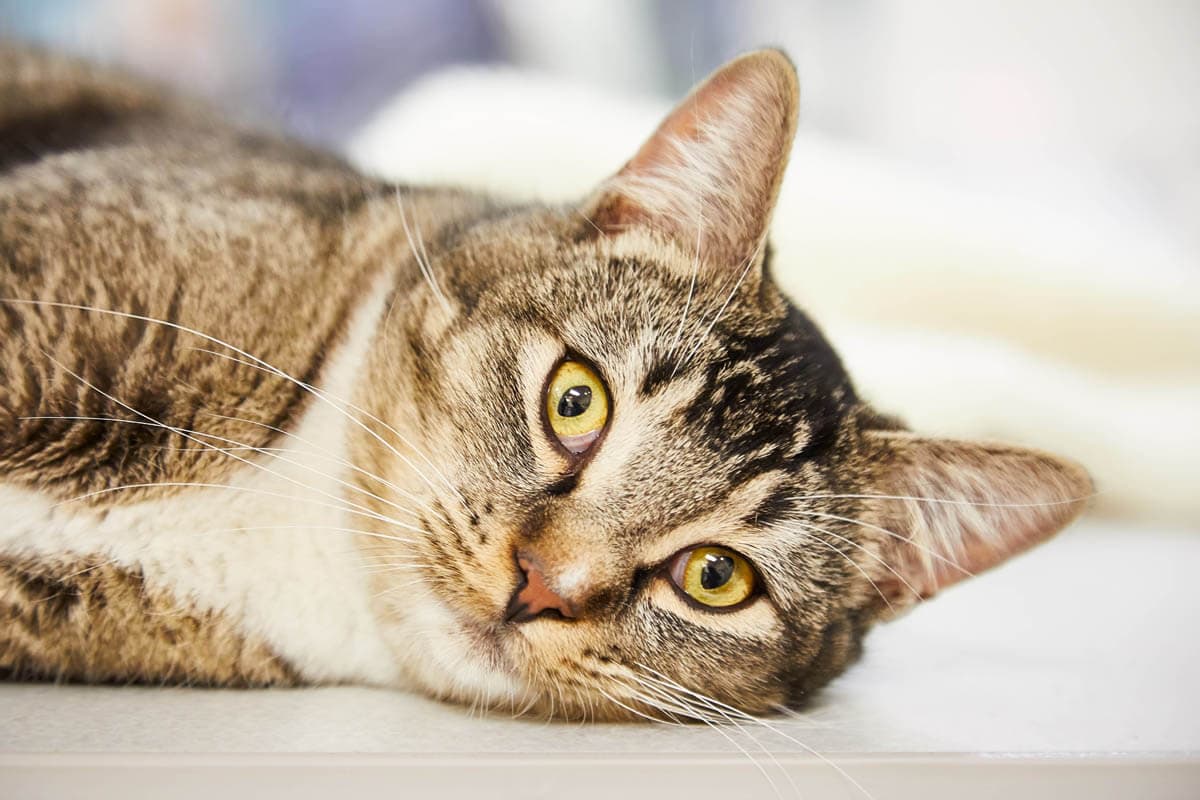What is maropitant?
Drug Name: Maropitant citrate
Common names: Cerenia
Drug Type: Neurokinin-1 receptor (NK-1) antagonist
Uses: Vomiting, motion sickness
Species: Cat, dogs
Administered: Oral, injectable (subcutaneous and intravenous)
Human labelled products: None
Maropitant citrate is the only FDA approved antiemetic which is produced by Zoetis for the prevention and treatment of vomiting and motion sickness in cats and dogs.
Mechanism of action
The area postrema is the vomiting centre which is located in the medulla (part of the brainstem) and contains high concentrations of substance P and its receptor neurokinin-1 (NK1). Substance P is a neuropeptide that plays a key role in eliciting vomiting as well as pain and inflammation. The docking of substance P onto the NK1 receptor stimulates the vomiting reflex.
Maropitant is a neurokinin-1 (NK1) receptor antagonist which has a similar structure to substance P and can bind to NK1 receptors to prevent vomiting.
Uses
- (FDA approved): Maropitant is indicated for the treatment of vomiting in cats who are 16 weeks and older, once a day for up to five consecutive days.
- (Extra label): Prevention of vomiting associated with chronic kidney disease.
- (Extra label): One study found administration of maropitant to cats 20 hours before administration of dexmedetomidine and morphine before being anesthetised significantly reduced the incidence of post-surgery compared to cats in a control group who received an injection of saline. However, cats who received subcutaneous maropitant exhibited a greater adverse reaction compared to the control group.
- (Extra label): Prevention of motion sickness when administered two hours before travelling.
How is maropitant supplied?
The injectable solution is supplied in 20 ml multidose vials.
Oral tablets are supplied in 16, 24, 60 and 160 mg blister packs.
Dosage
1 mg/kg subcutaneous or intravenous for the treatment of vomiting
1mg/kg subcutaneous or oral for the prevention of motion sickness in cats
8mg per cat oral administration in reducing dexmedetomidine and morphine-induced vomiting
When given to prevent motion sickness, feed your cat a small meal 2-3 hours before travelling, and administer maropitant one hour later (two hours before travel). Wrap the tablet in a treat to prevent vomiting, but do not wrap too tightly as this can prevent the release of the drug in the stomach.
Topical exposure may elicit an allergic skin reaction in some individuals. Wash with soap and water in the case of accidental skin exposure.
Side-effects
Maropitant is well-tolerated in cats, however, all drugs come with potential side-effects.
The following adverse effects have been reported to the FDA Center For Veterinary Medicine in order of reporting frequency
- Depression/lethargy
- Anorexia (loss of appetite)
- Hypersalivation
- Moderate to significant pain and/or vocalisation during injection
- Shortness of breath (dyspnea)
- Ataxia
- Fever
- Recumbancy
- Vomiting
- Panting
- Convulsion
- Muscle tremors
Drug interactions
Maropitant is biotransformed in the liver by CYP-450 enzymes and is highly bound to plasma proteins. Use with caution with other drugs which are protein-bound including:
- Chloramphenicol
- Erythromycin
- Ketoconazole
- Itraconazole
- Phenobarbital
- NSAIDs
Contraindications
Safe use has not been evaluated in cats with gastrointestinal obstruction or those who have ingested a toxin.
Use caution in cats with liver dysfunction as maropitant is metabolised by the liver.
Use caution in cats who are on other medications that are protein-bound.
The safe use has not been evaluated in cats who are pregnant or lactating.
Warnings
Do not administer maropitant to cats unless prescribed by a veterinarian.
Do not use in humans.
Topical exposure may cause allergic skin reactions. If this occurs, wash with soap and water.
Safety
Only administer medications that have been prescribed for the cat by a veterinarian and always follow dosing instructions. We recommend one member of the household take on the task of medicating to prevent accidental double-dosing.
If the cat does receive more medication than prescribed, contact a veterinarian immediately.
Storage
Foil packaged tablets are protected from moisture, however, once the tablets are removed from the blister pack and halved, no loss of potency occurred during the 48 hour testing period. However, it is recommended that unused tablet portions be wrapped tightly in foil and safely stored away from children and animals.
Frequently asked questions
How long does maropitant last?
The effects of maropitant last for 24 hours.
Can injectable maropitant be given orally?
No, administer oral tablets by mouth and injectable subcutaneously or intravenously.
How long can a cat stay on maropitant?
Up to five days.

